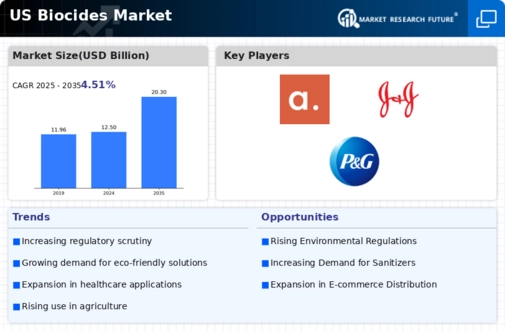The US Biocides Market is characterized by a competitive landscape shaped by the increasing demand for products that can inhibit the growth of harmful microorganisms. This market encompasses a diverse range of applications, including healthcare, agriculture, water treatment, and industrial sectors, making it essential for various industries to maintain product safety and efficacy. The presence of numerous players, along with constant innovation and the introduction of new formulations, contributes to the dynamic nature of the market.
Factors such as regulatory compliance, environmental considerations, and advancements in biocide technology further influence the competitive landscape, prompting companies to adapt and enhance their offerings to meet market needs effectively.Lanxess holds a significant position in the US Biocides Market, showcased by its robust portfolio of high-performance biocidal agents that cater to various applications. The company's emphasis on research and development empowers it to create innovative solutions designed to address market challenges effectively. Lanxess is recognized for its capabilities in the water treatment sector, where its products contribute to maintaining water quality and safety, thus reinforcing its market presence.
Additionally, Lanxess has a well-established distribution network in the US, allowing it to efficiently reach a wide customer base. The company's commitment to sustainability and regulatory compliance adds to its strengths, positioning it as a trusted partner for customers seeking effective biocide solutions to safeguard their products and processes.FMC Corporation maintains a strong presence in the US Biocides Market through its versatile product range and focus on innovation. The company offers a variety of biocidal products that serve critical sectors, such as agriculture and industrial applications.
FMC Corporation’s investments in research and development facilitate the creation of advanced biocide solutions tailored to meet specific customer needs and comply with stringent regulatory requirements. The company has strategically engaged in mergers and acquisitions to expand its market reach and enhance its capabilities, strengthening its position within the US. Through its broad distribution channel and customer-centric approach, FMC Corporation continues to solidify its standing in the market, making it a formidable competitor poised to meet the evolving demands of the industry.













